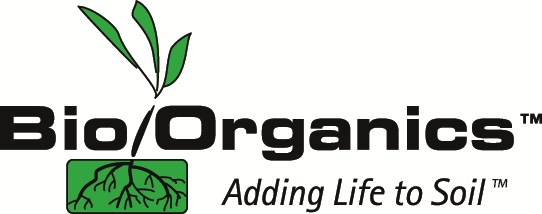Now that I have attended many trade shows and garden shows, I have a better understanding of growers’ perceptions towards organics. There is the core group of organic growers who have dedicated their lives to studying and to understanding the biology in soil, the interaction of organisms and the right formulations of products (amendments, fertilizers, etc.) for themselves. This is a small but growing niche. There are also the chemical growers who may never switch (although as I have mentioned the cost of petroleum-derived products may force this in the future). However, there are also many growers who want to try organic growing for various reasons (lowering costs, producing their own food, etc.) but have not had the proper introduction to start.
I have found that often that descriptions of the biology in our products and the optimum biology can confuse users, especially when they are used to how chemicals work as fertilizers. We are working to simplify the message. Basically, in traditional organic farming there were three main components to healthy soil and healthy crops: (1) good compost, (2) strong seeds and (3) proper rotations. These are all still applicable today, however, biological sciences have made tremendous advances, in many ways these advances are similar to the advances made by chemicals that created the modern agricultural revolution.
Compost: At the heart of any good organic growing is being able to fertilize and build the soil with good compost. The reason compost has worked so well is it contains valuable microorganisms and micronutrients. The beneficial bacteria and other microorganisms that have helped to break down the compost are also very active in the soil and help plants uptake nutrients and protect roots. With the advances in science these organisms can now be grown in labs and small amounts can be used to produce a similar effect without the bulk of compost.
Seeds: Seed breeding is important. In the chemical industry genetically modified organisms are now dominant. This has been a tremendous money maker as companies, mainly Monsanto, can patent seeds based on genetic modification. Lesser known are the organic hybrids that have been bred as well as other types of seed breeding including horizontal breeding which help to build resistance to a wider variety of pathogens.
Rotation: Crop rotation is a core foundation of organic growing. Depending on the farm, these rotations can be three to seven years. Rotations are a key ingredient to battling weeds as well as disease. I wrote about the price of corn and the economic incentive to monocrop with GMO corn. However, as I mentioned, the input costs for synthetics continue to rise whereas organic farming attempts to minimize these costs.
Our attempt to simplify organics is to explain that it all starts with the soil biology. Mycorrhizae, beneficial bacteria, earthworms, etc. all contribute to a living ecosystem. Our mycorrhizal-fungi based products and biostimulants bring these components to the roots of plants in an easy powder form. These types of biology can even be added to hydroponics now. This does not replace the factors above but instead can be used to take organic growing to an optimal level. It also helps growers struggling to make the transition and newer biological based growers as it provides a needed boost to the soil and to the crops without spending years creating the perfect environment. We are trying to increase the amount of organic growers and hopefully have created an easier process that is less intimidating that more people are willing to try.
Good Growing,
Graham Phillips
BioOrganics
